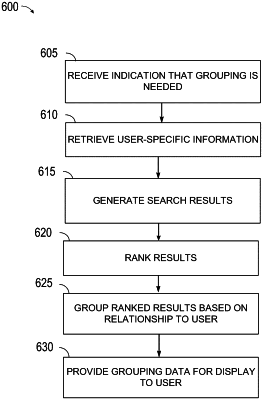| CPC G06F 16/24578 (2019.01) [G06F 16/13 (2019.01); G06F 16/156 (2019.01); G06F 16/1734 (2019.01)] | 19 Claims |

|
1. A data processing system comprising:
a processor; and
a memory in communication with the processor, the memory comprising executable instructions that, when executed by, the processor, cause the data processing system to perform functions of:
receiving a request to search for one or more files that are relevant to a first user;
in response to receiving the request, retrieving a user data signal including user-specific data for identifying one or more relevant files, the user data signal including information about a plurality of users' relationship with the one or more files, a plurality of users including the first user and one or more other users;
identifying the one or more relevant files in a storage medium based on the user data signal and at least one of a user category property, a lifecycle stage property, a relevant activity property, or an activity level property of a plurality of files stored in the storage medium;
organizing the one or more relevant files into groups, via a machine-learning model, by using the user category property to identify a task performed by the one or more users on the one or more relevant files, by identifying a user, from among the one or more users, who performed the task, and by determining the identified user's relationship to the first user and dynamically organizing the one or more relevant files into groups based on the task and the user's relationship to the first user; and
providing for display data relating to the groups,
wherein the user category property is determined by:
receiving data relating to a plurality of activities performed by the one or more other users on each of the one or more files within a specific time period; and
analyzing the data to identify a category of user activity based on a type of activity performed on one of the one or more files during the specific time period, and
wherein the identified category is stored as metadata for each of the one or more files.
|